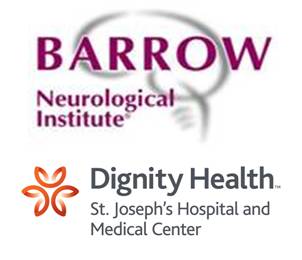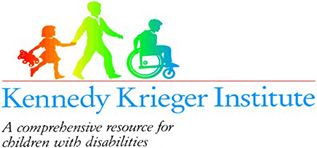Stewart H. Mostofsky, M.D.1,2,3, Mary Beth Nebel, Ph.D.1,2
- Center for Neurodevelopmental and Imaging Research, Kennedy Krieger Institute.
- Department of Neurology, Johns Hopkins School of Medicine.
- Department of Psychiatry, Johns Hopkins School of Medicine.
Brian Caffo, Deana Crocetti, Benjamin Dirlikov, Mary Martinelli, Daniel Peterson, James, Pekar, Alyssa Tiedemann, and Kristie Sweeney.
Total: N = 211 (age range 8-13 years)
Autism Spectrum Disorders (ASD): n = 56 (8-13 years)
Typical Controls (TC): n = 155 (8-13 years)
Relation to ABIDE I
This site participated in ABIDE I; the present data collection represents newly collected data from independent participants. The protocols utilized are highly similar to the ABIDE I KKI data collection (though some individuals were scanned using a head coil with 32 channels instead of 8 channels- see scan parameters below). Thus, if needed, most data from these two KKI collections can be merged.
Relation to NDAR
None of these data have been uploaded to NDAR.
Inclusion Criteria
Children were eligible to participate if they met the following criteria: a) between age 8 years, 0 months to 12 years, 11 months, 30 days; b) informed consent was provided by a parent or guardian and assent was provided by the child; and (c) a Wechsler Intelligence Scale for Children - IV (WISC-IV)1 or WISC-V2 Full Scale IQ > than 80, unless there is a 12 point or greater index discrepancy, in which case the Verbal Comprehension Index (WISC-IV or WISC-V), Perceptual Reasoning Index (WISC-IV) or the Visual Spatial Index or Fluid Reasoning Index (WISC-V) must be > 80 and the lower of the indices must be > 65.
Autism Spectrum Disorders (ASD)
All diagnoses were confirmed using the Autism Diagnostic Interview-Revised (ADI-R)3 and/or the Autism Diagnostic Observation Schedule-Generic (ADOS-G)4 module 3 or the ADOS-25 module 3, administered by master's level or higher research reliable psychologists. All participants met criteria for ASD based on the ADOS-G and/or ADI-R and the clinical impression of a child neurologist with extensive experience in autism diagnosis (S.H.M.).
Typical Controls (TC)
Children were not included as TC if they had a first-degree relative with ASD or if parent responses to either the Diagnostic Interview for Children and Adolescents-IV (DICA-IV)6 or for more recent subjects (N=6), the Kiddie Schedule for Affective Disorders and Schizophrenia for School-Aged Children - Lifetime Version (Kiddie-SADS-PL 2013)7, revealed a history of a developmental or psychiatric disorder, with the exception of simple phobias. The Kiddie-SADS-PL 2013 Working Draft has been revised from prior versions of the Kiddie-SADS to combine dimensional and categorical assessment approaches to diagnose current and past episodes of psychopathology in children and adolescents according to DSM-5 criteria.
Exclusion Criteria
Children were excluded if there was (a) presence or history of a definitive neurologic disorder including seizures (except for uncomplicated brief febrile seizures), tumor, severe head injury, stroke, lesion, or disease; (b) presence of a severe chronic medical disorder; (c) presence of a major visual impairment; (d) history of alcohol/substance abuse or dependency; (e) conditions that contraindicate or make it difficult to obtain MRI (cardiac pacemaker, surgical clips in the brain or blood vessels, dental braces, etc.); or (f) they had reached developmental level of 3 or above on the Physical Development Scale8 . Children with ASD were excluded if they had identifiable causes of autism based on parent responses during an initial phone screening. Children were excluded from the TC group if they were taking psychotropic medication or met criteria for diagnosis of a learning disability based on WIAT-II word reading scores being significantly discrepant from their Full Scale Intelligence Quotient (FSIQ).
Assessments and Procedures
Recruitment
Participants were recruited as part of an on-going study conducted by the Center for Neurodevelopment and Imaging Research (CNIR) at the Kennedy Krieger Institute (KKI). Sources of recruitment included advertisements posted in the community, local pediatricians' and psychologists' offices, local schools, social service organizations, chapters of the Autism Society of America, the Interactive Autism Network (IAN) database, outpatient clinics at KKI, and word of mouth. This study was approved by the Johns Hopkins Medical Institutional Review Board. Written consent was obtained from a parent/guardian and assent was obtained from each child. Testing was distributed over two onsite study visits. On average, the time between onsite visits was 13.5 days and never exceeded 7 months.
Estimated IQ
Intellectual ability was assessed using either the WISC-IV or the WISC-V. The WISC-IV is comprised of ten core subtests which generate an FSIQ, as well as four composite scores known as indices: Verbal Comprehension (VCI), Perceptual Reasoning (PRI), Processing Speed (PSI) and Working Memory (WMI). The WISC-V is also comprised of ten core subtests which generate an FSIQ, as well as five composite scores: Verbal Comprehension (VCI), Visual Spatial (VSI), Fluid Reasoning (FRI), Processing Speed (PSI) and Working Memory (WMI). The VCI and PRI/VSI scores were provided to populate VIQ and PIQ fields in the shared dataset, respectively.
Handedness
Handedness was determined using the Edinburgh Handedness Inventory9, which is a 12-item questionnaire used to assess dominance of a person's right or left hand in everyday activities.
Medication Information
Current use of any medications was obtained at the time of evaluation using a medical and developmental history questionnaire developed by our laboratory. The questionnaire provides a comprehensive review of the child's birth and medical history, and developmental milestones. To avoid effects on cognitive and behavioral measures, stimulant medications were discontinued the day prior to or of testing/scanning. Participants were, however, allowed to continue treatment with other psychotropic medications that would normally require a longer washout period, for both ethical and practical reasons.
Psychiatric Comorbidity in ASD
Presence of other comorbid psychiatric disorders was also assessed using either the DICA-IV or the Kiddie-SADS-PL 2013, depending on the time of examination. For 51 of the 58 children with ASD, comorbid diagnosis of ADHD was based on DSM-IV criteria using DICA-IV; for the remaining seven, it was based on DSM-5 criteria using the Kiddie-SADS-PL 2013. A comorbid ADHD diagnosis was confirmed by the following criteria: (1) an ADHD diagnosis on the DICA-IV or the Kiddie-SADS-PL 2013 and (2) a T-score of 65 or higher on scale L (DSM-IV: inattentive) and/or M (DSM-IV: hyperactive-impulsive) on the CPRS-R:L or CTRS-R:L, when available or a T-score of 65 or higher on Inattentive Presentation and/or Hyperactive-Impulsive Presentation on the Conners Rating Scales-3 (CRS-3)10 Parent or CRS-3 Teacher, or a score of 2 or 3 on at least 6/9 items on the Inattentive and/or Hyperactivity/Impulsivity scales of the ADHD-RS. Final confirmation was based on clinical judgment of the investigators.
Additional Phenotypic Information
A range of additional measures were collected as part of the ongoing study at KKI at one of the two onsite visits. A list of participant IDs and date of collection for each measure is provided with the phenotypic information. Those shared in this repository include the following: the parent rated Repetitive Behavior Scale-Revised (RBS-R)11, Child Behavior Checklist (CBCL)12, Behavior Rating Inventory of Executive Functioning (BRIEF)13, the Behavior Assessment System for Children- Second Edition (BASC-2)14, the Social Responsiveness Scales (SRS)15 or the Social Responsiveness Scales-2 (SRS-2).16
References
- Wechsler D. Wechsler Intelligence Scale for Children-WISC-IV: Psychological Corporation; 2003.
- Wechsler D. Wechsler Intelligence Scale for Children-Fifth Edition (WISC-V): Psychological Corporation; 2014.
- Lord C, Rutter M, Le Couteur A. Autism Diagnostic Interview-Revised: a revised version of a diagnostic interview for caregivers of individuals with possible pervasive developmental disorders. Journal of autism and developmental disorders. 1994;24(5):659-685.
- Lord C, Rutter M, DiLavore PC, Risi S. Autism diagnostic observation schedule-WPS (ADOS-WPS). Los Angeles, CA: Western Psychological Services. 1999.
- Lord C, Rutter M, DiLavore PC, Risi S, Gotham K, Bishop S. Autism diagnostic observation schedule: ADOS-2: Western Psychological Services Los Angeles, CA; 2012.
- Reich W, Welner, Z., Herjanic, B. The Diagnostic Interview for Children and Adolescents-IV. North Tonawanda: Multi-Health Systems; 1997.
- Kaufman J, Birmaher, B., Axelson, D., Perepletchikova, F., Brent, D., & Ryan, N. . Kiddie Schedule for Affective Disorders and Schizophrenia for School-Aged Children - Lifetime Version (Kiddie-SADS-PL 2013 Working Draft).
- Carskadon MA, Acebo C. A self-administered rating scale for pubertal development. Journal of Adolescent Health. 1993;14(3):190-195.
- Oldfield RC. The assessment and analysis of handedness: the Edinburgh inventory. Neuropsychologia. 1971;9(1):97-113.
- Conners CK. Conners 3rd edition: Multi-Health Systems Toronto,, Ontario, Canada; 2008.
- Bodfish JW, Symons FJ, Parker DE, Lewis MH. Varieties of repetitive behavior in autism: comparisons to mental retardation. J Autism Dev Disord. 2000;30(3):237-243.
- Achenbach TM, Howell CT, Quay HC, Conners CK, Bates JE. National survey of problems and competencies among four-to sixteen-year-olds: Parents' reports for normative and clinical samples. Monographs of the Society for Research in Child Development. 1991:i-130.
- Gioia GA, Isquith PK, Guy SC, Kenworthy L. Test review behavior rating inventory of executive function. Child Neuropsychology. 2000;6(3):235-238.
- Reynolds CR, Kamphaus RW. BASC-2: Behavior assessment system for children; 2004.
- Constantino JN, Gruber CP. Social Responsiveness Scale (SRS). Los Angeles, CA: Western Psychological Services; 2007.
- Constantino J, N., & Gruber, C. P. Social Responsiveness Scale, Second Edition (SRS-2). Torrance, CA: Western Psychological Services; 2012.
Preparation for the MRI Scan
Children completed a mock scan during their first visit to acclimatize to the scanning environment. Eight of the 213 children completed their MRI session on the same day as their mock scan; the remaining 205 children completed their MRI session during their second on-site visit, which on average was 12.9 days after the mock session.
MRI Scanning
Scanning was conducted at the F. M. Kirby Research Center for Functional Brain Imaging on one of two Philips 3T scanners (Achieva; Philips Healthcare, Best, The Netherlands) using either an 8-channel (N=152) or a 32-channel (N=61) phased array head coil (see links below for the list of subjects and the specific head coil used). One resting state fMRI scan was collected either prior or after structural scans (see below for a link of the rest anatomical acquisition order by individual ID). During the resting state scan, children were instructed to relax and focus on a crosshair while remaining as still as possible. During the MPRAGE, children were allowed to watch a movie of their choosing.
MRI Modalities and Scan Parameters
MRI data shared include: MPRAGE and resting state-fMRI. Note: as mentioned above two receiving head coils were used. See below for a link of the R-fMRI and anatomical acquisition order and head coils used by individual ID along with links to the specific scan parameters.
MRI Data Quality
All MPRAGE and EPI images were internally reviewed for quality control by research staff members. As datasets with a wide range of image quality are being shared, only the most extreme cases of movement were excluded from this sample.



















